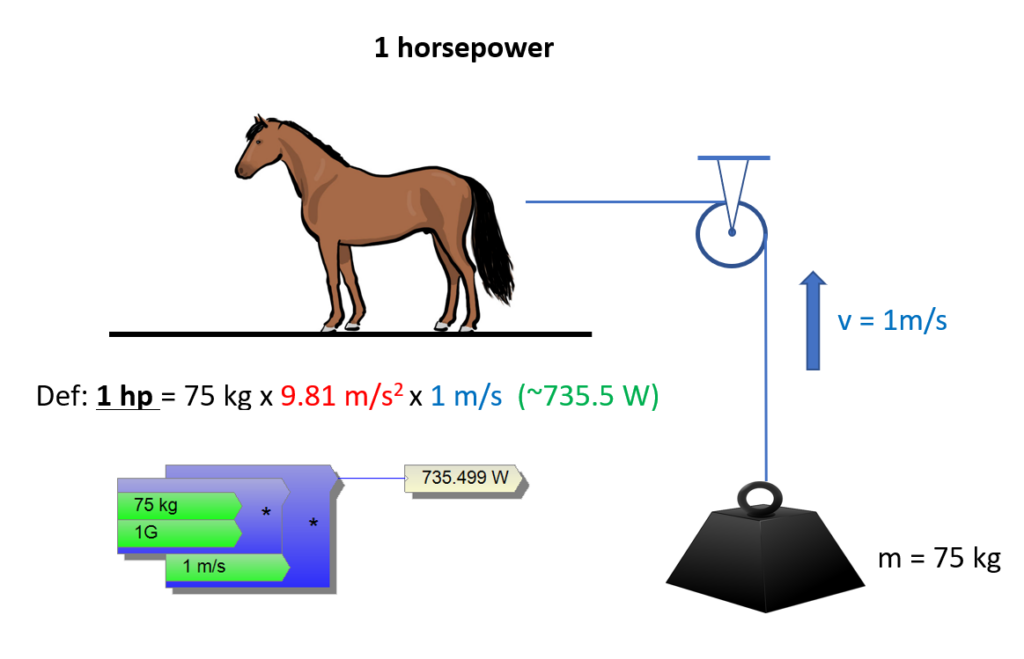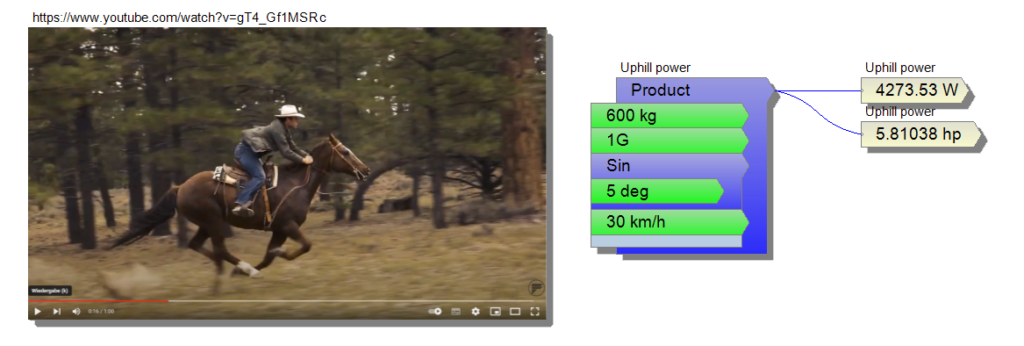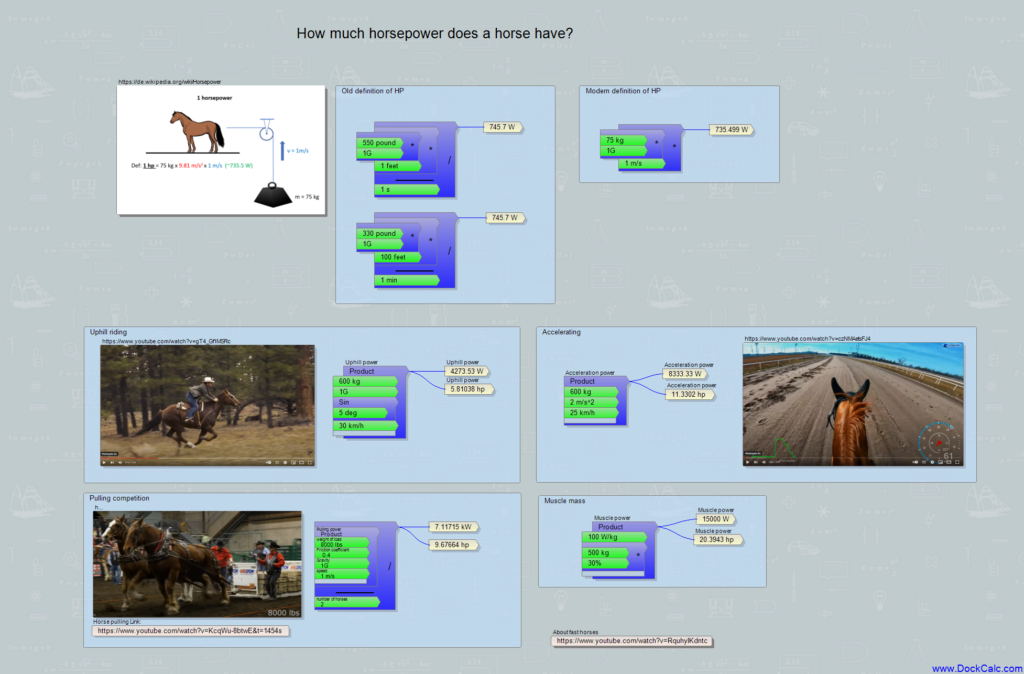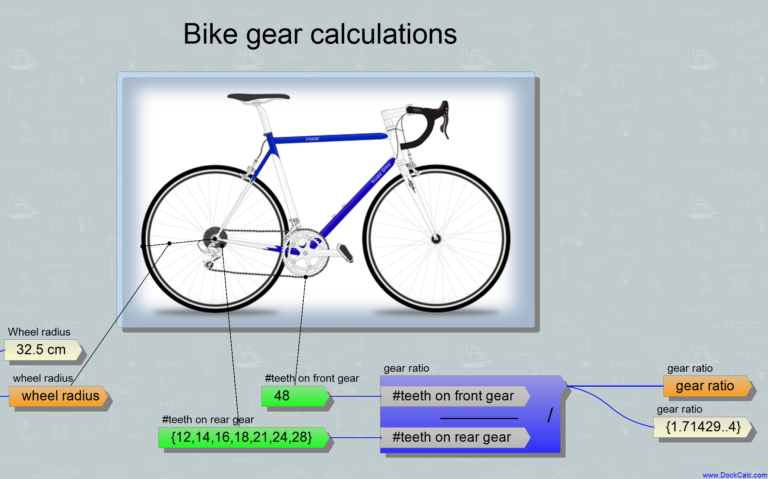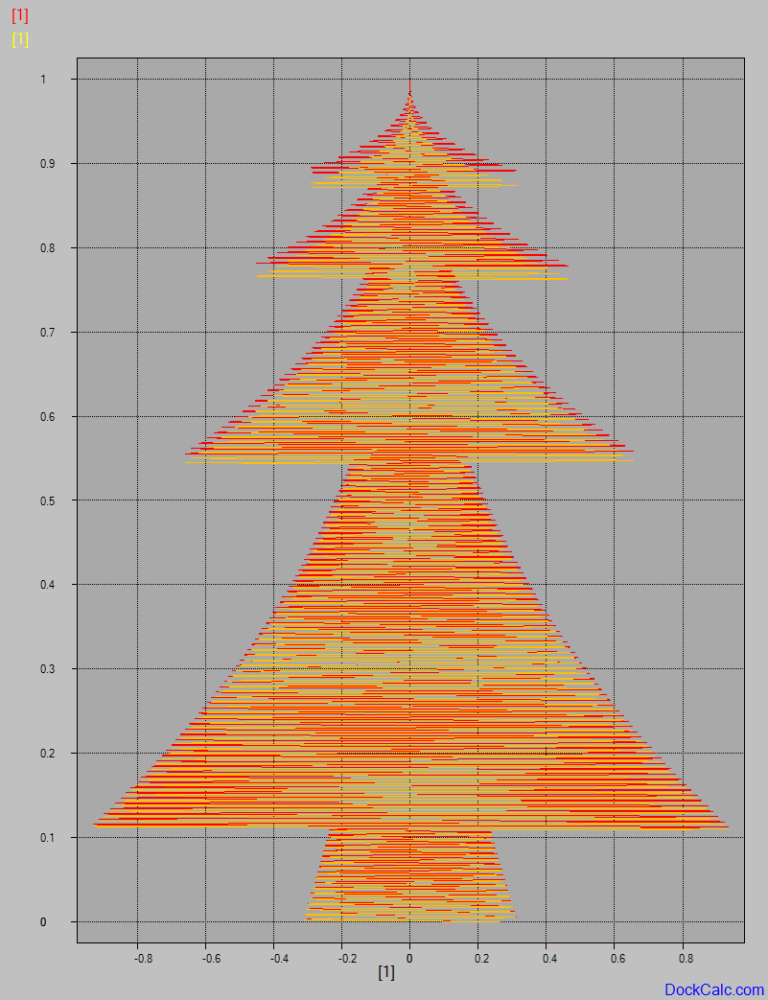How much horsepower does a horse have?
Sounds like a strange question, doesn’t it? Well, obviously one, because the name horsepower includes “horse”! But that is not entirely the case. The horsepower unit dates back to James Watt’s time. When he developed his steam engine and wanted to rent it out to do the work of horses to drive the pumps or lifting mechanisms in the mines, he had to estimate roughly how many horses his machine could replace. And to do this he had to know roughly what power a horse can achieve on average. (Power is the work done in a unit of time or in other form force multiplied by the velocity in its direction.
James Watt had to make some assumptions when defining his own term “horse-power”. He started with the speed at which a mining horse can lift a load of a certain weight during his unexciting but all the more excruciating working day. He figured that a horse could pull 550 pounds at 1 foot per second up, or 330 pounds per minute up 100 feet. Both calculations (taking gravity into account, of course) correspond to about 745 watts of power.
This definition was rewritten in the course of standardization so that today’s horsepower (which is not officially part of the SI measurement system) is defined as the power required to lift a body weighing 75 kg at a vertical speed of 1 m/s. This means that its current value is only 735.49 W, but it is finally expressed in modern SI units.
Now we know what horsepower is, but whether it really is the power of a horse is still unclear. For example, when a car’s maximum power is specified, it is assumed that the car’s engine will deliver that maximum power under given ideal conditions (high engine speed, full load, given barometric pressure, air temperature, humidity, etc.). This is not a fair comparison with the horse, since we did not look at the maximum possible performance of the horse’s legs, but at the average performance of a melancholic working day. If we were to do the same with a car, for example, an officially 640 hp Lamborghini Huracán could only show an average wheel-power output of well under 30 hp in a usual city traffic jam, so its owner would be ashamed.
But the following question is much more exciting: If I measured the horse like a car, what maximum power would I get as a result?
To measure engine performance, the vehicle industry uses engine brake test benches, or if the engine is installed in the vehicle, the entire vehicle is placed on a roller brake test bench and the wheel power measured there is converted back into engine power. There is also something similar treadmill for running racehorses, but as far as I know, the load there does not exactly correspond to real running (e.g. the influence of air resistance is questionable) and I’m not sure if -during the canter very strongly fluctuating- traction force of the legs is measured and if so, with what accuracy.
So we defined the challenging task of measuring the maximum power of a horse.
It’s no coincidence that when I was looking for talented development engineers for my previous employers, I sometimes asked applicants: “How much horsepower does the horse have?” And of course I didn’t want any number as a result, I just wanted to hear creative ideas.
One thing is for sure: anyone who has ever ridden a horse when the horse was frightened of something so that the half-ton, muscular beauty ran like a gust of wind, does not seriously believe that this imposing beast is really just driven by only a fraction of the power of a 3- 4 hp moped.
With a little creativity we could find situations where the horse’s performance could be more or less estimated.
The most romantic way is watching a movie of Zorro or some western hero galloping up a mountainside at sunset.
(An example of an impressive gallop can be seen here: https://www.youtube.com/watch?v=gT4_Gf1MSRc )
If the angle of inclination and the speed can be estimated using the cinema screen, the performance is calculated by multiplying the total mass of horse + rider (m= 600 kg with saddle and rider), the sine of the angle of inclination (e.g. 0, 0871 for 5 degrees), gravity and speed (let’s say 30 km/h). We have elegantly neglected air resistance here. I hope that the data are more or less realistic, but the power calculated in this way is already more than 4270W, so more than 5.8 hp, not just one.
A similar calculation can also be applied to the case where the horse suddenly gallops and accelerates at a considerable speed. (for example you can see it here: https://www.youtube.com/watch?v=czNMAetsFJ4 )
Here, for the sake of accuracy, it is necessary to “catch” the moment when the product of the horse’s speed and acceleration is greatest. I think that a horse at 25 km/h can easily accelerate more than 2 m/s2 (~20% of gravity) or even more. These data show a power of over 11 hp.
On the other hand, those familiar with biology and horse anatomy can assume that the horse’s hundreds of muscles make up about 40% of the animal. Of course, not all of these muscles need to perform at the same time with maximum load, but in any case, well over 100-150 kg of muscle mass work together in this case. Muscles can briefly put out between 50 and 100 W per kilogram (this value is in a similar range in mammals and humans as well). So, if I multiply 150 kg by 100 W/kg, I get 15,000 W, which is more than 20 hp.
There are horse-drawing competitions too, in which the poor animals have to pull a load that slides on the ground. The maximum traction plays the most important role here, but this sport is also suitable for calculating some kind of performance. (https://www.youtube.com/watch?v=KcqWu-8btwE&t=1454s )
Power is simply the product of pulling force and speed. From the video I took the load of 8000 lbs (~3630 kg) as a basis, whereby I can see from the video that the load moves at least 1 meter in one second. It would also be important to know the coefficient of friction between the load and the loose soil, which I arbitrarily estimated at 0.4 (I’m almost certain it could be much higher, since 0.4 is the grip between winter tires and a snowy road for cars. A loose surface can certainly cause a stronger braking effect). If I add up this data, the power per horse is over 7 kW (~9.6 hp).
Obviously, the estimated data used for my calculations are only rough approximations in all cases, they cannot keep up with an exact measurement. On the other hand, it can be determined using several independent methods that a horse’s output is many times higher than what we call horsepower. Therefore, please treat these beautiful animals with the respect they deserve! You can also be sure that the engine of a modern car with an average of 100-130 hp is not equal to 130, but only 10 horses, at least in terms of maximum power.
Of course, we could say: “Yes, but my car can perform at its maximum for hours, but the horse can’t!”
Just look at the official specifications of today’s modern electric cars and you will see that there is a big gap between maximum and continuous power (often 50% or less of continuous power compared to peak power, otherwise the electric powertrain would overheat and be damaged). Therefore, the horse has no reason to be ashamed against a Tesla or an electric BMW or an Audi, since both warm up and tire in the long canter.
The aim of the previous brainstorming was to stimulate the creativity, to show that it is possible to draw interesting conclusions from easily accessible data and that the DockCalc software is a good help for it. If you have other suggestions for estimating horse power, share your calculation with others, for example in the form of a DockCalc calculation. You can download the program for this here.
My DockCalc calculation look like this:
I wish you a lot of fun and creativity!

